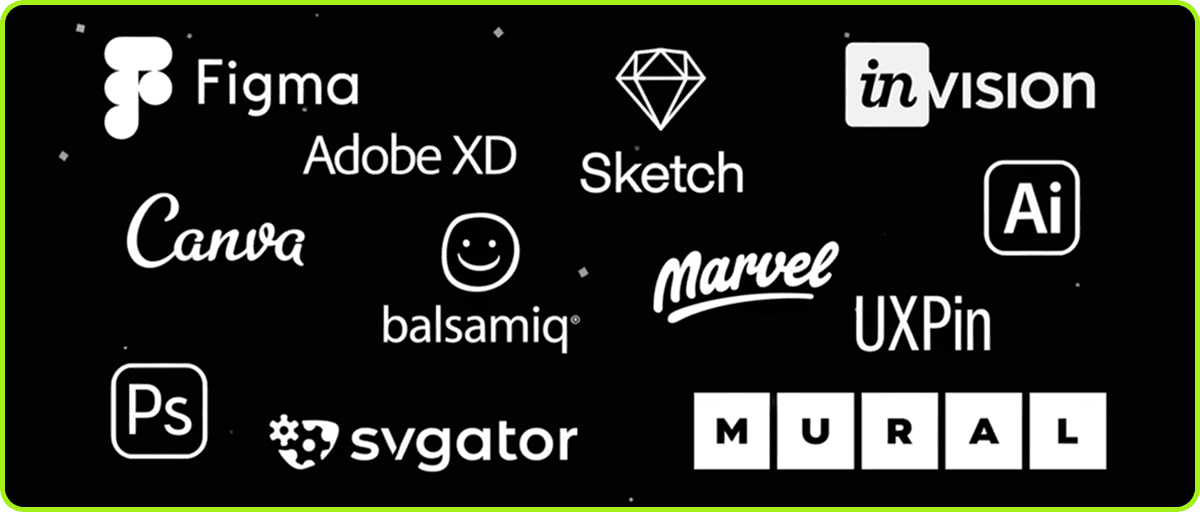Top 12 UI/UX Design Tools In 2021
Dinesh Kumar
VP Engineering @ RadiansysIntroduction
The need for accuracy and precision-led web designing emerged as a crucial requirement post pandemic as more businesses adopted the digital-first model. A very crucial part of web designing is UI and UX creation that must match pace with the shifting web design trends. New approaches and practices of UI/UX are constantly upping and evolving, helping tech leaders become appealingly visible. UI and UX mostly go hand-in-hand towards creating functionality-rich websites delivering great content and satisfactory experiences to the customers.
There is a humongous variety of UI/UX designing software helping the creation of detailed websites that establish business goals perfectly and drive great user experiences. These tools can help both an individual or a UI/UX design company to build the perfect website. You can choose between complete designing tools, specialized tools for prototyping, and tools with great design UI libraries and frameworks.
To rid you of the confusion, we present this article as a preliminary read on the best UI/UX design tools currently available in the market. The below-mentioned tools have been picked after a comprehensive study of their overall utility, features, user-friendliness, and more. Keep reading to know more.
Top 12 UI/UX design tools
Here are the 12 wonderful UI/UX design software that we found to be the best choice for creating the most stunning websites.
1. Figma
Figma is one of the most versatile design and prototyping tools available. It supports component libraries, shared styles, and live collaboration, making it ideal for distributed teams. Designers can create, reuse, and organize UI elements across multiple pages and products.
2. Adobe XD
Adobe XD combines vector-based UI design with powerful prototyping features. It integrates well with other Adobe tools like Photoshop and Illustrator, making it a natural upgrade for designers already in the Adobe ecosystem.
3. Sketch
Sketch is a long-standing favorite for Mac-based designers. It excels at creating pixel-perfect interfaces with reusable symbols and shared styles, and its plugin ecosystem covers everything from design systems to handoff.
4. InVision Studio
InVision Studio focuses on advanced prototyping and animation. It supports complex transitions, microinteractions, and offers collaborative features that tie into the broader InVision platform.
5. UXPin
UXPin bridges the gap between design and code by allowing designers to work with interactive components and logic. It is well-suited for complex products where fidelity and behavior matter as much as visuals.
6. Marvel
Marvel is a simple, streamlined tool for wireframing, prototyping, and basic user testing. It's well-suited for teams that need a lightweight solution to turn ideas into clickable flows quickly.
7. Balsamiq
Balsamiq specializes in low-fidelity wireframes, helping teams iterate quickly on structure and content before polishing visuals. Its sketch-style UI intentionally keeps discussions focused on layout and hierarchy.
8. Mural
Mural is a digital whiteboard used for design thinking workshops, brainstorming, and mapping user journeys. It supports templates, sticky notes, and integrations with collaboration tools to keep teams aligned.
9. Adobe Illustrator
Illustrator is the go-to tool for vector-based illustrations, logos, and iconography. Its precision and scalability make it vital for creating brand assets that look sharp at any size.
10. Adobe Photoshop
Photoshop remains essential for image editing, compositing, and high-end graphics. Many UI designers use it for hero images, marketing visuals, and complex visual treatments that complement interface layouts.
11. Canva
Canva democratizes design with an accessible drag-and-drop interface and a huge library of templates, icons, and images. It is particularly helpful for non-designers who still need on-brand visuals for marketing and content.
12. SVGator
SVGator focuses on creating and animating SVG graphics. It supports a variety of animation types and exports lightweight assets that integrate well with modern web and mobile apps.
How to pick the right UI/UX design tool
No single tool will handle every design task perfectly. Each has its own strengths. The key is matching tools to your project's needs, budget, and team skills.
- ✔️Assess your project and its specific requirements. Identify the type of website to be built whether it is going to be an e-commerce website, personal website, or anything else.
- ✔️Identify your budget limit and list down the tools accordingly. Check out both free and paid web design software.
- ✔️Assess the UI/UX design tools based on their features, user-friendliness, pricing plans, customer support, responsiveness, and other factors. The aim is to see if the tool can meet the designing plan of your website and is worth the investment.
- ✔️You must also look into the need of using two or more tools for your project if needed. In such a scenario, assess the total cost for the combined toolset being provided and if it's worth it.
- ✔️Workflow management and effective collaboration is a crucial need of modern workspace. Thus, check if the selected design tool is facilitating that or not. The tool must provide integration with project management tools and with other designing tools to be even better.
A great UI/UX design toolset can help individuals, small businesses, e-commerce teams, and large enterprises alike. The tools highlighted here provide strong foundations for building user-centered, visually compelling experiences.
Thanks for reading!
